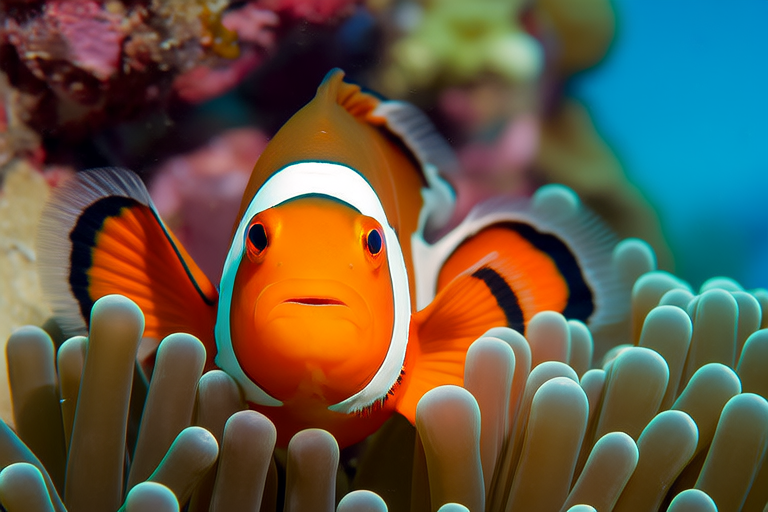The Ultimate Guide To Keeping Clownfish As Pets: Tips And Tricks For Beginners
Clownfish are one of the most popular fish species among aquarium enthusiasts due to their vibrant colors and playful nature. These small, hardy fish are perfect for beginners looking to start their journey into the world of saltwater aquariums. However, keeping clownfish as pets requires some specific knowledge and care to ensure they thrive in your tank. This guide will walk you through everything you need to know about clownfish care, tank setup, diet, tank mates, and more.
Understanding Clownfish
Native to the warm waters of the Pacific and Indian Oceans, clownfish are known for their striking orange, white, and black stripes. They are also famous for their symbiotic relationship with sea anemones, which provides them with protection from predators. While this relationship is fascinating, it’s not necessary for clownfish to live with anemones in captivity, making them ideal for many home aquariums.
Tank Setup Requirements
Setting up a proper tank environment is crucial for the health and happiness of your clownfish. Here are some key considerations:
- Size: A minimum tank size of 30 gallons is recommended for a single pair of clownfish. Larger tanks provide more swimming space and better water quality.
- Water Parameters: Maintain a temperature between 76-82°F (24-28°C), a pH level of 8.1-8.4, and salinity at 1.020-1.025 specific gravity. Regular testing with reliable test kits is essential.
- Filtration: A high-quality filter that can handle biological, mechanical, and chemical filtration is necessary to keep the water clean and free of harmful substances.
- Lighting: Clownfish prefer moderate lighting, so avoid overly bright setups. A photoperiod of 8-12 hours per day is sufficient.
- Decorations: Provide plenty of hiding spots such as rocks, caves, and plants. This mimics their natural habitat and helps reduce stress.
Suitable Tank Mates
Choosing compatible tank mates is important to maintain harmony within your aquarium. Clownfish generally get along well with other peaceful species, but there are some guidelines to follow:
- Compatible Species: Good tank mates include other small, non-aggressive fish like damsels, tangs, and wrasses. Shrimp and snails can also be added for biological diversity.
- Avoid Aggressive Fish: Avoid larger, more aggressive species that may bully or eat smaller fish like clownfish.
- Compatibility Within Species: It’s best to keep only one pair of clownfish per tank to prevent territorial disputes. If you want to add more clownfish, consider a larger tank with plenty of hiding spots.
Diet Specifics
Clownfish are omnivores, meaning they eat both plant and animal matter. A balanced diet will help them stay healthy and vibrant. Here are some feeding tips:
- Variety: Feed a mix of flake food, pellets, frozen foods, and live foods. Brine shrimp, mysis shrimp, and bloodworms are excellent choices.
- Frequency: Feed your clownfish two to three times a week. Overfeeding can lead to poor water quality and obesity.
- Proportion: Offer a combination of meaty and vegetable-based foods to ensure they receive all necessary nutrients.
Common Health Issues
Like any pet, clownfish can face various health issues. Early detection and treatment are key to maintaining their well-being. Some common problems include:
- Fungal Infections: Look for white patches on the body or fins. Treatment involves using anti-fungal medications.
- Bacterial Infections: Symptoms include redness, ulcers, or lethargy. Antibiotics may be needed for severe cases.
- Ich: Small white spots appear on the fish. Quarantine and treat with appropriate medication.
- Poor Water Quality: High ammonia or nitrite levels can cause stress and illness. Regular water changes and maintenance are vital.
Beginner-Friendly Tips
Starting with clownfish can be exciting but also challenging. Here are some tips to make the process smoother:
- Research Thoroughly: Before purchasing any fish, learn about their needs and behaviors. Understanding their requirements will help you create a suitable environment.
- Choose Healthy Fish: When buying clownfish, look for active, alert individuals without visible injuries or signs of disease.
- Monitor Water Conditions: Regularly check water parameters and make adjustments as needed. Stability is key to preventing stress and illness.
- Be Patient: Clownfish take time to acclimate to new environments. Give them several weeks to settle in before introducing other fish.
- Stay Informed: Continue learning about aquarium husbandry and clownfish care. Join online forums or local clubs for support and advice.
Conclusion
Keeping clownfish as pets can be a rewarding experience for both novice and experienced aquarists. By following the tips and tricks outlined in this guide, you’ll be well on your way to providing a happy, healthy home for these delightful creatures. Remember, the key to successful clownfish care lies in creating a stable, enriching environment and addressing any issues promptly. Happy fishkeeping!
